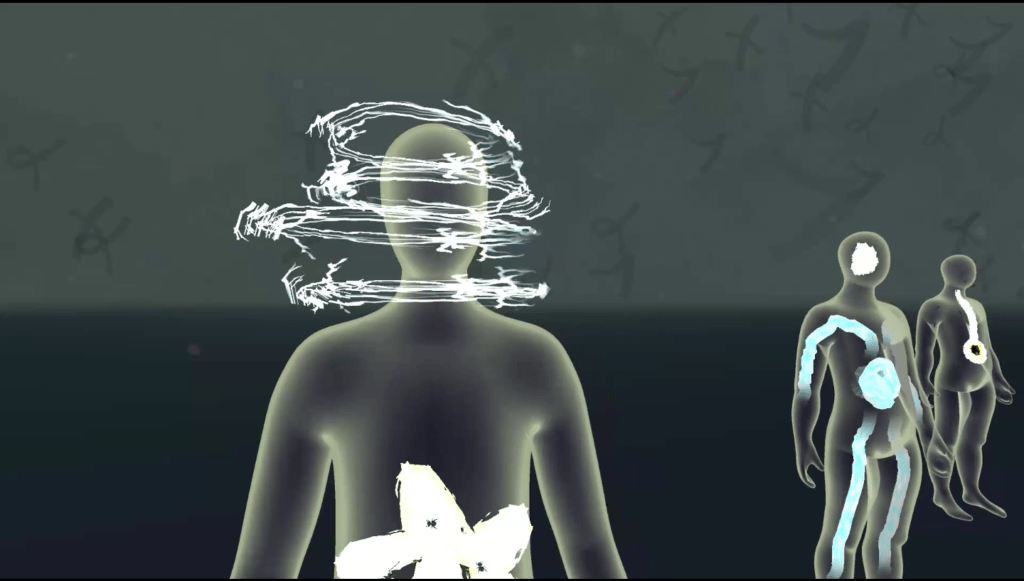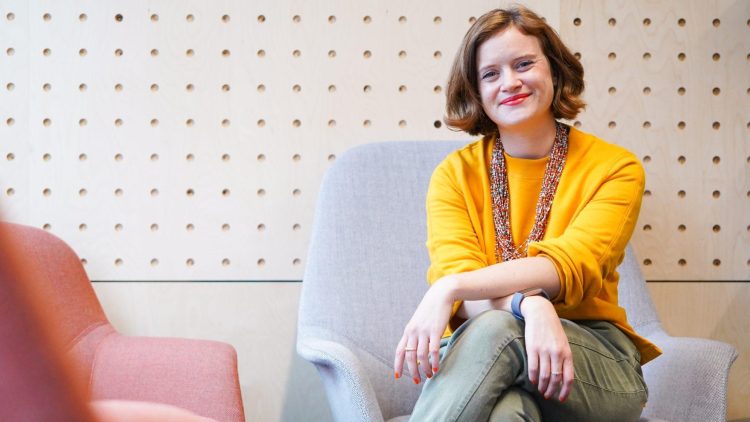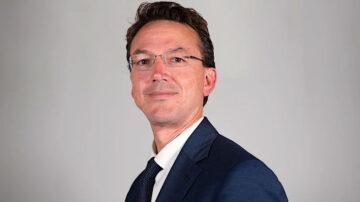Channel Eye talks to the founder of Hatsumi about bringing art, science and health together to explore VR’s potential in the healthcare industry.
As a second wave of coronavirus ravages countries across the world, experts warn that another health crisis is on the way.
According to the World Health Organisation, symptoms of depression and anxiety are reportedly on the increase. The isolation, fear and stress caused by the pandemic is generating widespread psychological trauma, and governments are being warned that an historic wave of mental health problems is fast approaching.
There has never been a more urgent need to find new therapies to help deal with the problem. Politicians love to bandy around phrases like “build back better,” but what could this actually look like in terms of mental health services? And could technology play an important part?
Sarah Ticho believes it could. She’s the founder of Hatsumi, a research and design studio that explores how virtual reality (VR) can challenge how we feel and think about the world around us, with the aim of improving mental and physical health.
From developing new life-saving techniques to training doctors of the future, VR has a multitude of applications for health and healthcare, for both clinical practitioners and patients. But Sarah, who works at the intersection of arts, health and technology, also believes that VR has enormous potential when we move beyond working in our silos and enable artists, scientists and patients to work together.
“When it comes to the potential for VR, there is so much to be discovered. We’re seeing its application in exposure therapy to help people with severe phobias, and it can be game-changing for people suffering with psychosis or severe agoraphobia. A lot of the work that I do is is based around mindfulness and introspection,” she says on a call from her VR co-working space in Brighton.
“While I don’t think that VR alone is going to solve mental health problems – it can’t solve systemic inequality, financial issues, or what’s happening in people’s relationships, for example – I am really interested in how it can fit in to the Arts on Prescription model and be part of a more holistic approach to helping people develop skills for learning to self regulate and understand their emotions.
“Even prior to Covid, there was a growing amount of money being invested into mental health technology. We need to look at the diversity of tools can be used to help improve wellbeing”.
Drawing on personal experience

Sarah was a guest speaker at Jersey TechWeek, discussing how VR can change the way we think about health. Her company, Hatsumi, is pioneering the use of VR for body mapping, a therapeutic tool used to help people with mental health difficulties and chronic pain.
Traditionally, body mapping involves tracing a life-size outline around a person’s body, which is filled in during a creative and reflective process. Participants are asked to explore their physical and psychological feelings to produce an image reflective of their experience. This is used to help improve communication within a consultation, as well as enable opportunities to share feelings with friends and family, who may not understand what is happening for that person.
“It came from my experience of being a patient when I had my first and, so far, only experience of psychosis”.
Hatsumi translates this into a VR experience, using 3D drawing and spatial environments to enhance the potential, accessibility and impact. How did she think to combine the therapeutic tool with the tech?
“I’d say I first became interested in VR about six years ago,” says Sarah.
“It came from my experience of being a patient when I had my first and, so far, only experience of psychosis. One of the reasons I became quite unwell was because I’d had a lot of stuff happen to me and I was so focused on moving forward onto the next thing that I didn’t take a moment to stop and process what was going on – I didn’t even know that was an option”.
Sarah wanted to explore how you could use the arts and storytelling to communicate experience. Her first thought was to create a film about her own situation but it felt too self-indulgent.
After watching a talk by Australian biomedical engineer Dr Jordan Nguyen, however, in which he discusses the potential of VR in health care, something clicked.
“I remember thinking, yes, that’s what I want to get involved in. Virtual reality was a way of bringing together my interests in mental health, contemporary art, film and anthropology”, she says, explaining that she studied both biological and social anthropology at university.
“I ended up getting a curator role at the Big Anxiety Festival in Sydney and it was through that and the research process that I thought, oh my god, and I came to realise how VR can be used to help manage people’s pain and help educate others what we are feeling and experiencing”.
After the festival, Sarah worked alongside researchers at Stanford University in the US. She then pitched the idea for Hatsumi at a VR and Wellness Hackathon at Google Launchpad in San Francisco in 2018. The response was great and she decided to move back to the UK to pursue the idea as a business.
Using immersive tech to explore female sexual health

Alongside her role with Hatsumi, Sarah is also the producer on Deep, an award-winning clinically validated breath controlled VR experience designed to reduce anxiety. She’s also just kicked off a new project called VulVR, which, as the name suggests, focuses on female sexual health.
From menstruation to menopause, consent and sexual pleasure, VulVR creates interactive content that explores women’s health, sexuality and wellbeing. Currently focused on the menopause, the project aims to educate and connect women through the use of VR.
“We want it to be used as a tool to help people to understand their bodies and explore taboo subjects. When it comes to the female experience, there are all these things that people don’t talk about. Sexual health and female sexual pleasure are really overlooked subjects, especially in the world of gaming, which has a really bad history of sexism”, she says.
“So I thought, who’s making money? Porn, obviously, which is made by men for men… but you’d be surprised at how much innovation comes out of the sex industry”.
Technology and gaming are not the only industries with a bad rep for misogyny. Men essentially have an entire industry dedicated to exploring their sexual pleasure and it’s not exactly known for caring about the female experience. But it was actually the porn industry that inspired the idea for VulVR.
“It’s really hard being a female founder of a company in the immersive technology industry, doing esoteric things for health. It’s hard to get people as excited about it as you are. So I thought, who’s making money? Porn, obviously, which is made by men for men. So it did get me thinking. But you’d be surprised at how much innovation comes out of the sex industry”.
More than just sexual pleasure, VR can be used to explore other types of intimacy and connection, and Sarah thinks there’ll be new innovations around these less clinical uses of immersive technology, especially in light of the pandemic.
Championing VR as a valuable therapeutic tool
Having experienced a year of lockdowns and social distancing, the ability to communicate and create meaningful connections with people has never been more important for mental wellbeing. Yet convincing healthcare professionals, and those with the power to invest, that VR can be a valuable tool in tackling health problems, hasn’t been easy.
“People can be quite sceptical about the therapeutic impact of VR. It’s been adopted more in places like the US, where a number of really high profile hospitals use it. Here in the UK, myself and some colleagues from Immerse UK are speaking to the NHS and putting together a white paper. We want to show its tangible applications for health in the UK and look at the health economics of using it”, says Sarah, who is also working with Immerse UK (the UK network for immersive technology) to create standardisations, regulation and ethics frameworks for VR’s use in the healthcare sector.
“Healthcare is very clinical but mental health is so much more than that. VR can be one piece of the puzzle. And it’s fun.
“No one wants to be told to eat less and exercise more, but if you can make something a game, and you can be transported to a beautiful underwater universe – aren’t you going to respond better to that?”
Sarah Ticho was a guest speaker at Jersey TechWeek’s Digital Health Tech Transformation session.













